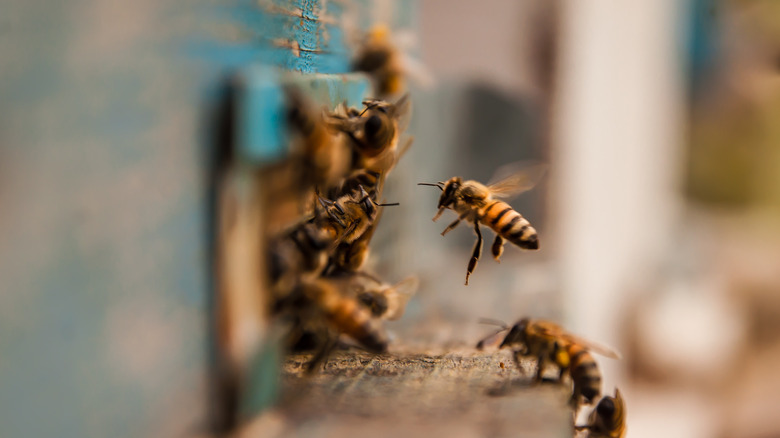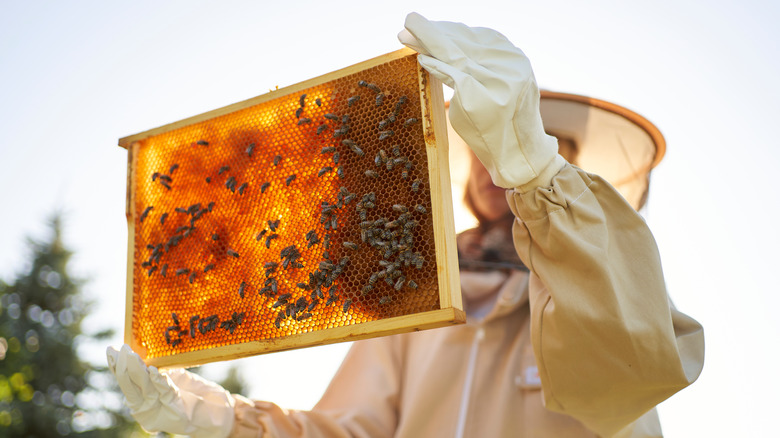Why Bees Are So Vital To The Food Chain?
Every furry mammal, ripe berry, crawling invertebrate, delicate flower, and microscopic protozoa forms a critical part of the Earth's many food chains. Some take and some give. Some build up and some break down. But, as National Geographic notes, remove an element from a food chain — frequently referred to as a food web to better represent its complex interconnectivity — and you risk throwing the system out of the careful balance that makes it work.
While humans do have an outsized negative impact on food chains, from removing apex predators to creating alternative ecosystems (per Annual Review of Environment and Resources), there is another creature that has such a profound positive impact that their existence is seen as a bellwether for the overall health of our natural world.
Every year the United Nations' Food and Agriculture Organization (FAO) celebrates World Bee Day on May 20 to shine a light on the role (and plight) of the pollinators that so many organisms depend on. Bees, along with bats, butterflies, and hummingbirds, to name few, directly impact 75% of food crops on Earth and 35% of "global agricultural land." But these species also face many threats, so it's important to take a moment to appreciate all that bees do for us.
The impressive impact that bees have
The basic facts of bees — honey, stings, black and yellow color scheme — are where many people's understanding of this insect begins and ends. But there's a whole lot more depth to bees than that.
According to the FDA, bees are one of the hardest agricultural working forces in the United States. In addition to their most famous product, the liquid gold known as honey, bees produce several other substances, from beeswax to venom, that are used in a host of applications. And when it comes to their role in the cultivation of food crops, bees are even more impressive. They account for around $15 billion worth of agricultural work every year. Again, that's in the U.S. alone. Worldwide, bees have an impact worth $235 to $577 billion, says Forbes.
However, threats on the global bee population are numerous. As outlined by the Pollinator Partnership, those threats include natural elements, like hemolymph-draining Varroa mites, intestinal-attacking fungi, and bacterial American foulbrood. There are also man-made problems, says the Museum of the Earth. These include environmental fluctuations due to climate change, pesticides, and habitat loss.
All of this underpins the need for World Bee Day. The Food and Agriculture Organization of the United Nations is dedicated to educating the public about the need for bees. Further, as various calamities threaten our global food supply, the FAO emphasizes that if eliminating hunger is a mission of humanity, then bees — and other pollinators — are an essential player in any plan.

